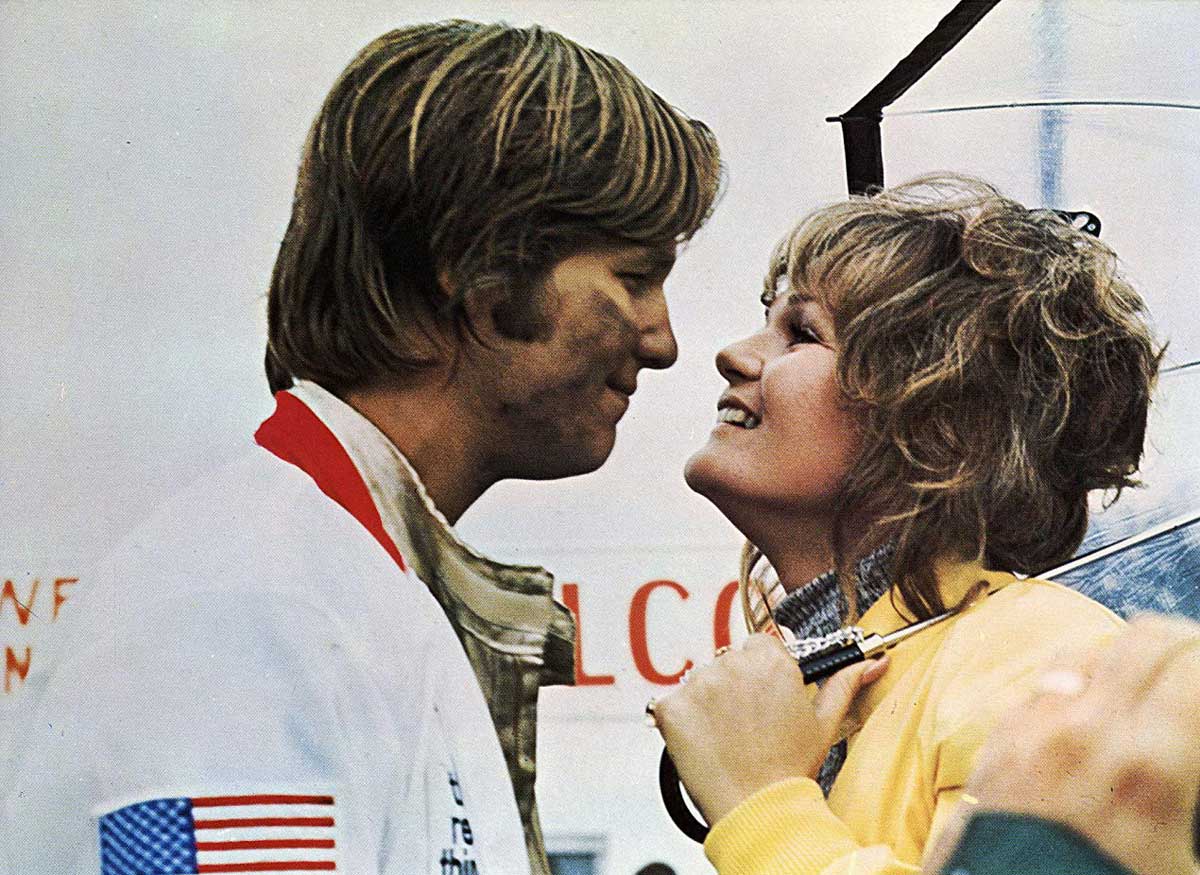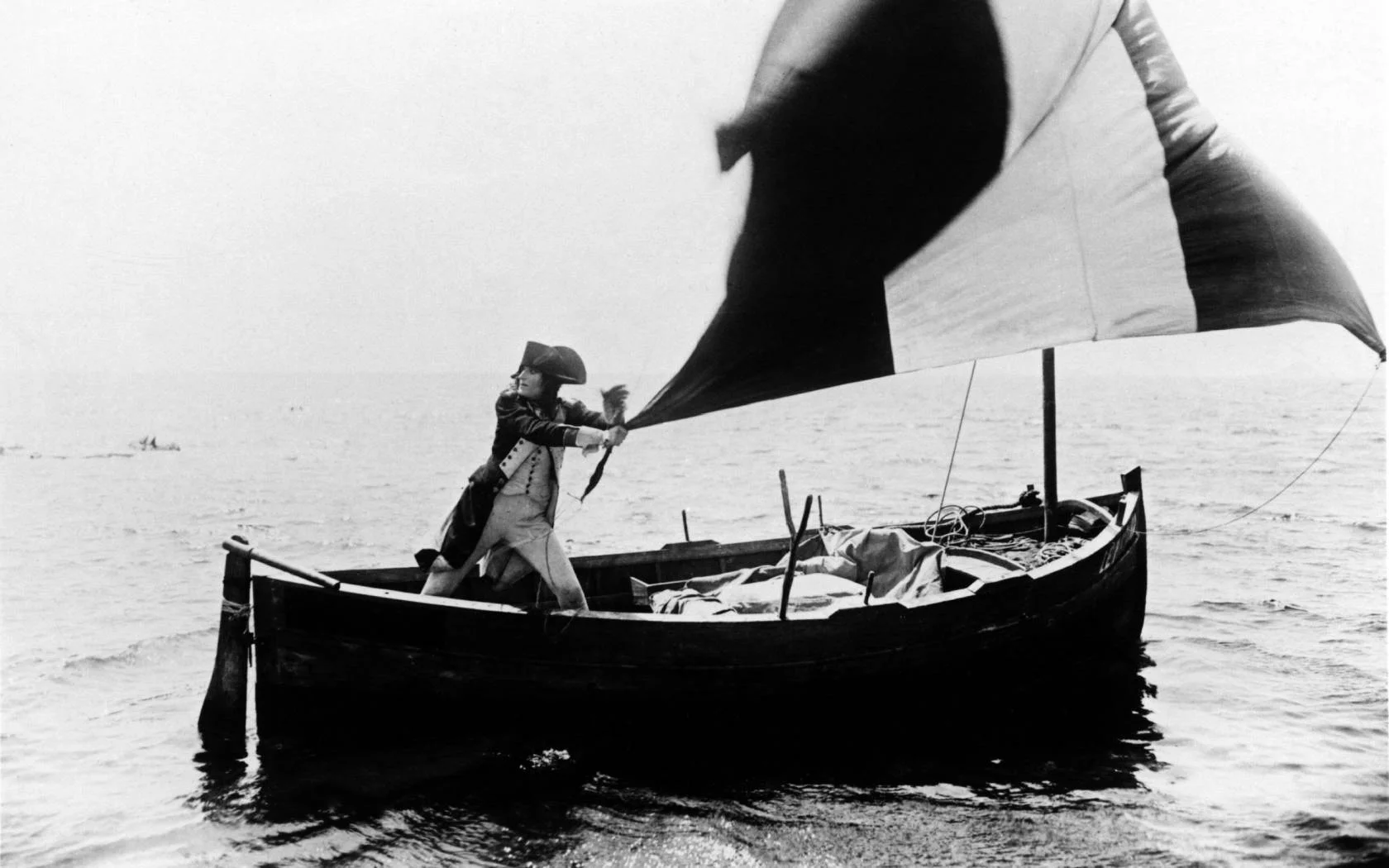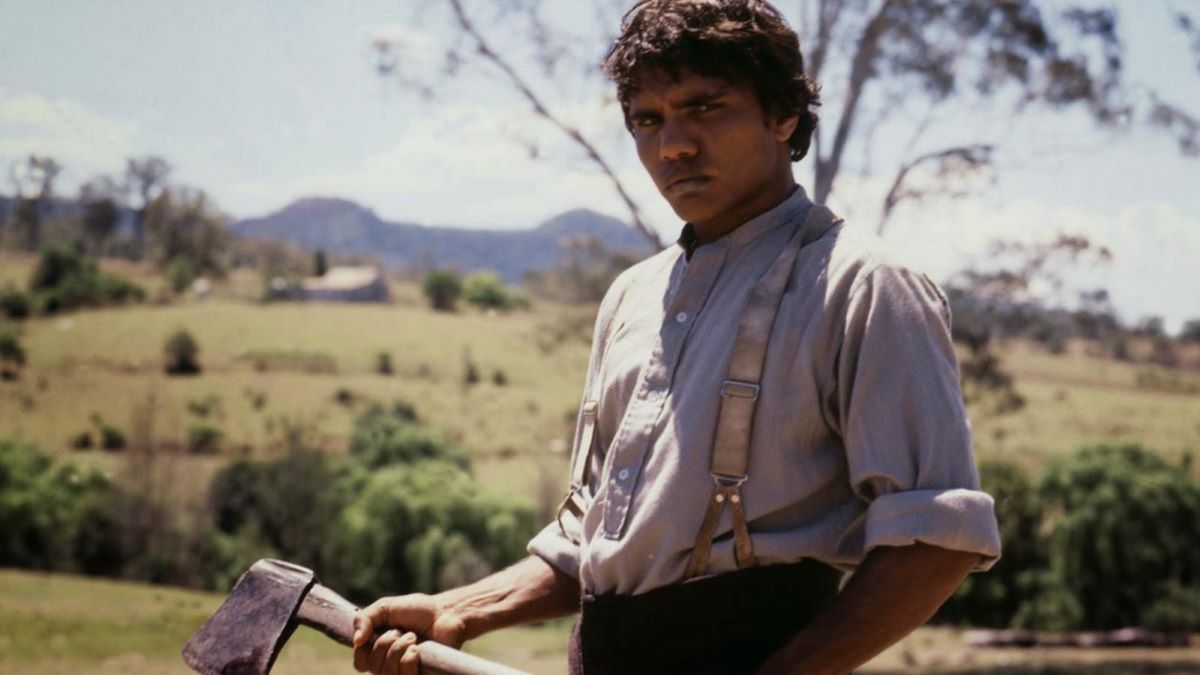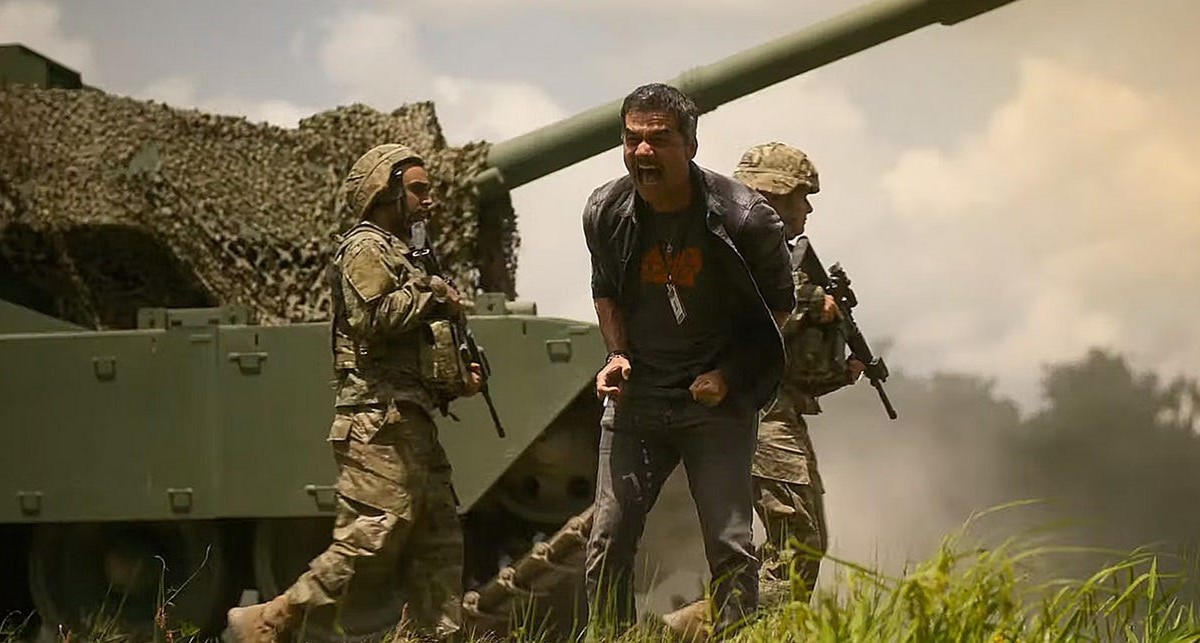When Tom Wolfe wrote about stock-car racing in Esquire in March, 1965 (“The Last American Hero Is Junior Johnson. Yes!”), he tried to evoke the physical sensations of this motor-age sport, with its rural speed-demon kings. Wolfe used the youth culture for excitement just as the movies did. Movies hit us in more ways than we can ever quite add up, and that’s the kind of experience that Tom Wolfe tried to convey in prose. He described the sensations without attempting to add them up or theorize about them, and, because he had a remarkable gift for hyperactive, evocative writing, the effect was an impassioned turn-on. And, because in this article and others he didn’t make his obeisances to the higherness of the traditional arts, he ran into the sort of disapproval that movies get. It was a compliment, of course — recognition from the enemy, because he had set up a great polemical target: the genteel, condescending press, which had ignored the new sports or treated them marginally. When Wolfe reprinted the racing article, which became the largest section of The Kandy-Kolored Tangerine-Flake Streamline Baby, he shortened the title to “The Last American Hero,” and that’s the name of the film based on it.
As journalism, Wolfe’s charged-up pieces had the impact of an explorer’s excited report on new terrain. But the youth culture that he brought into star journalism was already in the movies (just as the movies were in it). That culture was partly created by the movies, and his surfers and rockers and racers had been the lifeblood of the Grade B pop-genre films of the fifties. The car and the movie came along together, and chases, usually involving cars, have been surefire for so long that there was a time when the chase used to be called “pure movie”; there’s barely a male star who hasn’t served his days as a racer. The first demolition derby wasn’t held until 1961, but moviemakers had always known about people’s loving to see cars bashed. Demolition scenes were the primeval laugh-getters of silent pictures, and smashed cars and planes still get the biggest laughs in a new primeval picture like Live and Let Die. (Geoffrey Holder’s leering wickedness as the impresario of the revels in the picture is kiddie camp.)
In the introduction to his book, Wolfe recorded the discovery that a builder of baroque custom cars he talked with “had been living like the complete artist for years,” and went on, “He had starved, suffered — the whole thing — so he could sit inside a garage and create these cars which more than 99 percent of the American people would consider ridiculous, vulgar and lower-class-awful beyond comment almost.” That’s a strange overestimate of the number of people with good taste arrayed against the car builder; racing pictures were made for audiences to whom such a man had been an artist all along. So when you make a movie out of Tom Wolfe’s reports on the world outside the class biases of Eastern-establishment prudery, you’re taking the material back where it came from, and there’s no occasion for whoops of revelation. The movie of “The Last American Hero” isn’t startling, the way Wolfe’s pieces were; but, with a script that uses Wolfe as the source for most of the story elements, Lamont Johnson, who directed, has done the Southern racing scene and the character of the people caught up in it better, perhaps, than they’ve ever been done before. The movie has everything but originality.
The title (which is a tired one anyway) no longer means what it did for Tom Wolfe. The Junior Johnson that Wolfe wrote about beat the system and won on his own terms; that was what made him a hero and a legend. Driving whatever he could stick together, he won out over the cars sponsored and specially built by the motor industry. He won even when his own car couldn’t go as fast, by tricks such as catching free rides — by tailgating and being sucked along by the vacuum of the faster cars. A Southern country boy who became a hot-rod genius by running his father’s moonshine whiskey in the middle of the night, he beat the big pros by ingenuity, skill, and blind impudence, and he beat them over and over — seven times, even though he was out for a couple of seasons when he was sent to federal prison for helping his daddy with some of the heavy labor at the still. (The agents were gunning for him, because he’d made them look ridiculous on the back roads years before.) That’s the stuff of legend, all right. By the time Junior Johnson made his peace with Detroit and started to drive the factory-built racing cars, he was too much of a hero to be judged a sellout. He had already proved himself and then some, so it was all right for him to settle down, like a man of sense.
But between the publication of the Wolfe article and the making of the movie there was Vietnam. The hero of the movie — called Junior Jackson — starts out by cheating to win a demolition derby, and when he moves on to racing he can’t make it with his own car. He wins his first big race after he starts driving as a hired hand for a big-money man, Colt (Ed Lauter). Even the steady girl the real Junior had gone with since high school, and later married, is replaced by a track follower (Valerie Perrine), who floats along with the winners. So there’s sex without romance, sex without a future. The movie also avoids the easy possibilities for sympathy; it doesn’t make Junior’s path as hard as it was. He doesn’t go to prison in the movie — it’s his father who is busted as a result of junior’s bravado at the wheel. Colt, rather like George C. Scott in The Hustler, suggests a personification of the power of money, rather than just a representative of Detroit. Colt is almost lascivious about winning, and his winning is evil (but we never learn what winning gets him, or what it did for the diabolical Scott character). In The Last American Hero, corruption seems to be inescapable: if you want to win, you learn to take orders even from people whose idea of winning you don’t understand. And at the end Junior Jackson is growing up — which is to say, learning the price of success in the real world. He is forced to sacrifice his friendships and his principles. The film says that to win you give up everything you care about except winning. It tells the story not of a man who fights for his independence but of a man who is smart enough not to sell himself too cheap.
Who would believe the actual story of Junior Johnson now — how hard it really was for him, and that he made it? This version will seem far more honest to movie audiences, because the new conventions are that you can’t win and that everybody’s a sellout. Even the absence of romance makes the movie more convincing — tougher, cool. And since Junior, played by Jeff Bridges, has a visible capacity for tenderness, the absence of romance is cruelly felt by the audience. By turning Junior Johnson’s story around, the director, Lamont Johnson (and his writer, William Roberts, with a sizable, though uncredited, assist from William Kerby, who wrote the best scenes), has been able to make a hip, modem movie. It is, ironically, the most honest and gifted and tough-minded people in Hollywood who are fighting for defeat. The picture has total fidelity to its own scrupulous, hard-edged vision: the hero pays a price. It costs Junior Jackson something to win races; you can see that in Jeff Bridges’ face.
Lamont Johnson doesn’t exploit the backwoods people for the folksy touches that can make urban audiences laugh; he perceives the values in Junior Jackson’s family life — in his affection for his mother (Geraldine Fitzgerald) and his vacuously grinning brother (Gary Busey), and, especially, in his bond to his father (Art Lund, in a towering performance). The picture was shot in Virginia and the Carolinas, using footage from actual races and derbies, and the crowds and details, the excited Southern faces at the stock-car tracks — everything feels right. Lamont Johnson has the feel for the South that John Boorman (who is English) couldn’t get in Deliverance. Boorman is such an aestheticizing director — alienated, inhuman, yet the more gripping for the distance he keeps — that Deliverance held audiences by its mannered, ghastly-lovely cumulative power. It had the formality of a nightmare. (There was a hush in the theater when it was over.) Deliverance demonstrated that a movie can be effective even if you are always aware of the actors’ acting and don’t really believe in a single character, down to the bit players (except maybe James Dickey as the sheriff). But there is a special elation about a movie when the casting and the acting and the milieu seem effortlessly, inexplicably right. Paul Mazursky can get Los Angeles (Alex in Wonderland, Blume in Love) but can’t get Venice (Blume in Love). Lamont Johnson’s feeling for the milieu here amounts to an unusual sensibility: a gift for bringing all the elements of film together so that the people breathe right for where they live. He isn’t an original — not in the way that, say, Mazursky, manic poet of middle-class quirk, is. (Has there ever been another self-satirist like Mazursky — humanly understanding and utterly freaked out?) But Lamont Johnson’s work is attentive and satisfying. He’s a far better movie man than many of the more original talents, and this film, if one sees the version he made, has everything going for it. (Twentieth Century-Fox tampered with the film, cutting a couple of the best scenes and then opening it in the South as an action racing picture. Since it isn’t, it bombed out. And then the Fox executives decided it was a dog that wouldn’t go in the big cities, because they knew that sophisticated people don’t go to racing pictures. It opened in New York for a week in the summer as a “Showcase” presentation — that is to say, it got a second run without a first run — and its failure was the movie company’s self-fulfilling prophecy. Though the reviews were excellent, they came out too late to attract an audience; Fox hadn’t bothered with advance press screenings for a racing picture. But this movie transcends its genre; The Last American Hero, which is coming back next week, isn’t just about stock-car racing, any more than The Hustler was only about shooting pool, and in terms of presenting the background of a sports hero it goes far beyond anything in Downhill Racer. If The Last American Hero finds a fraction of its rightful audience now, perhaps someone in the head office at Fox could do the sane, decent thing and restore the cuts?)
Sometimes, just on his own, Jeff Bridges is enough to make a picture worth seeing, and he’s never before been used so fully, or in a way so integral to a film’s conception. Only twenty-two when this picture was shot, he may be the most natural and least self-conscious screen actor who ever lived; physically, it’s as if he had spent his life in the occupation of each character. He’s the most American — the loosest — of all the young actors, unencumbered by stage diction and the stiff, emasculated poses of most juveniles. If he has a profile, we’re not aware of it. He probably can’t do the outrageous explosive scenes that Robert De Niro brings off in Mean Streets or the giddy-charming romantic clowning that De Niro did in the otherwise forgettable The Gang That Couldn’t Shoot Straight, but De Niro — a real winner — is best when he’s coming on and showing off. Jeff Bridges just moves into a role and lives in it — so deep in it that the little things seem to come straight from the character’s soul. His brother Beau shares this infallible instinct, but Beau’s effects don’t seem to come from as far down; Beau Bridges has a lighter presence, an easier smile. Jeff Bridges’ Junior Jackson is a cocky Huck Finn in the age of Detroit: impulsive, dogged, and self-sufficient; sure enough of himself to show his rank, shrewd enough to know where he’s outranked. In a monologue scene (possibly suggested by Godard’s Masculine Feminine), Junior, away from home for a race and feeling sentimental, uses a make-your-own-record machine to tell his family he’s thinking of them and loves them; then, realizing he’s beyond this kind of kid stuff, he throws the record away. The quality of Bridges’ acting in this scene enlarges the meaning of the movie, yet he doesn’t seem to be using anything more than a few shrugs and half-smothered words.
“The last American hero” never goes soft, and maybe that’s why the picture felt so realistic to me; it wasn’t until I reread the Wolfe piece that I realized what a turnaround it was. But we believe the worst now — maybe only the worst. When we see a picture from the age of happy endings, the conventions may stick out as antiquated and ludicrous (and often they did when the picture was new), but the conventions that flow from the acceptance of corruption are insidiously believable, because they seem smart, while the older ones seem dumb. We will never know the extent of the damage movies are doing to us, but movie art, it appears, thrives on moral chaos. When the country is paralyzed, the popular culture may tell us why. After innocence, winners become losers. Movies are probably inuring us to corruption; the sellout is the hero-survivor for our times.
The New Yorker, October 1, 1973






1 thought on “The Last American Hero (1973) – Review by Pauline Kael”
Please upload her reviews of The Sorrow and the Pity (1969) by Marcel Ophuls, The Last Picture Show (1971) by Peter Bogdanovich and Intolerance (1916) by D.W. Griffith. Also Casualties of War (1989) by Brian De Palma.